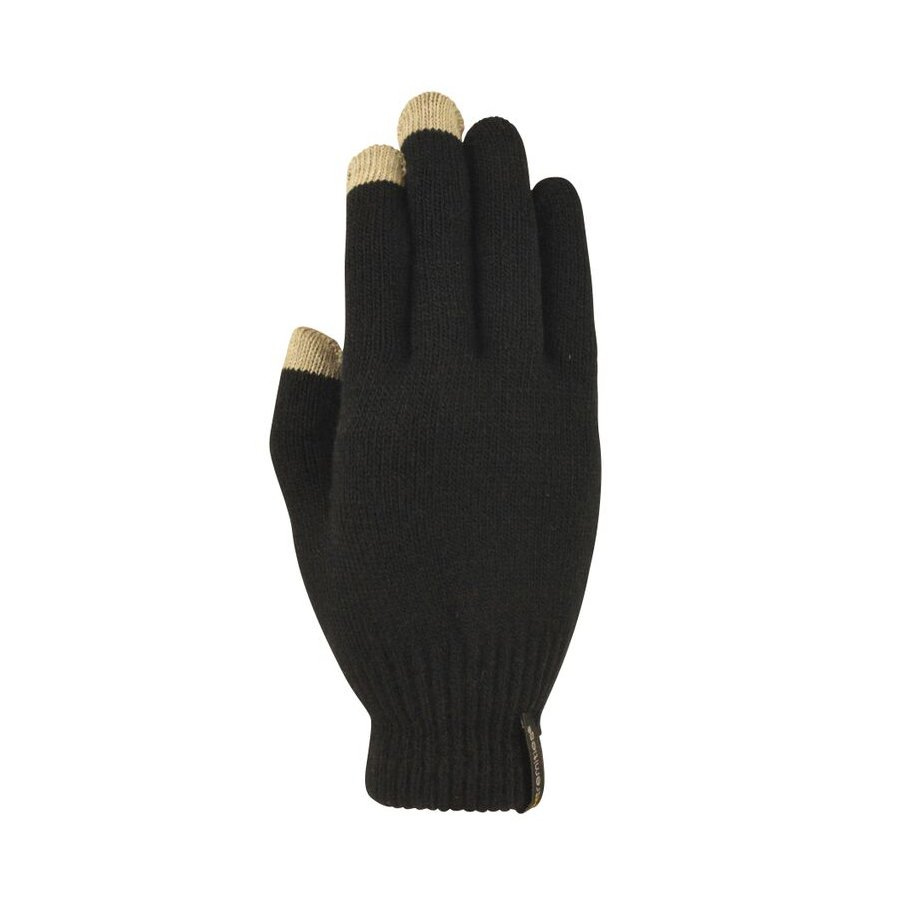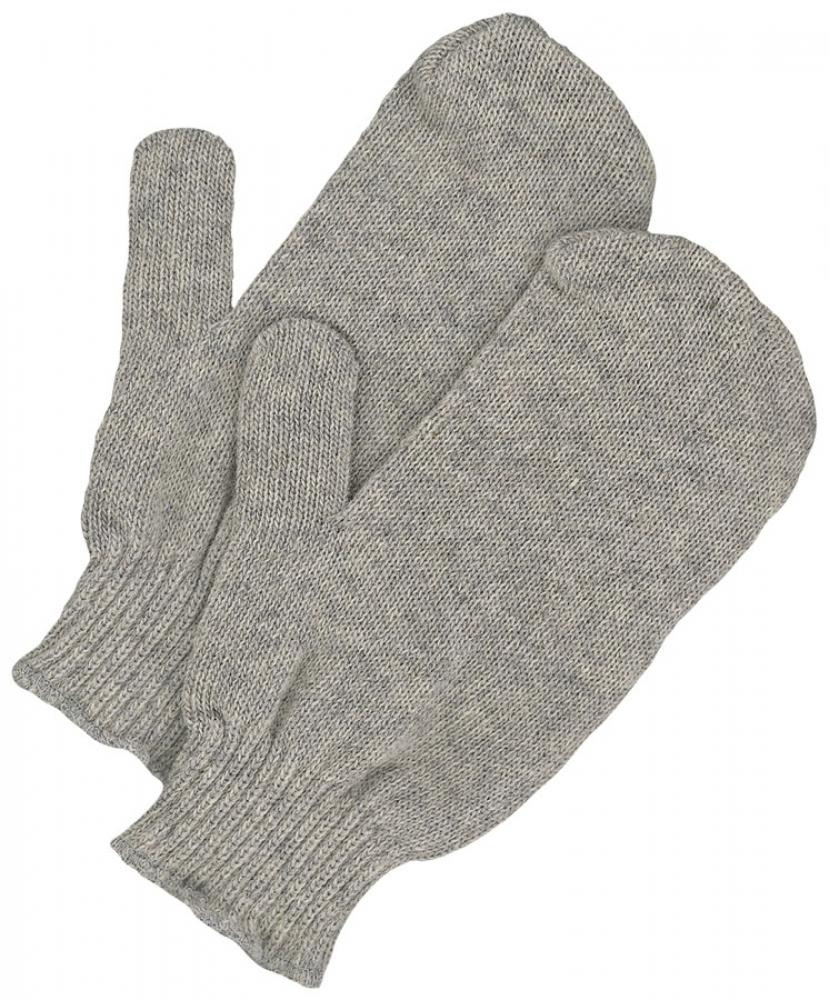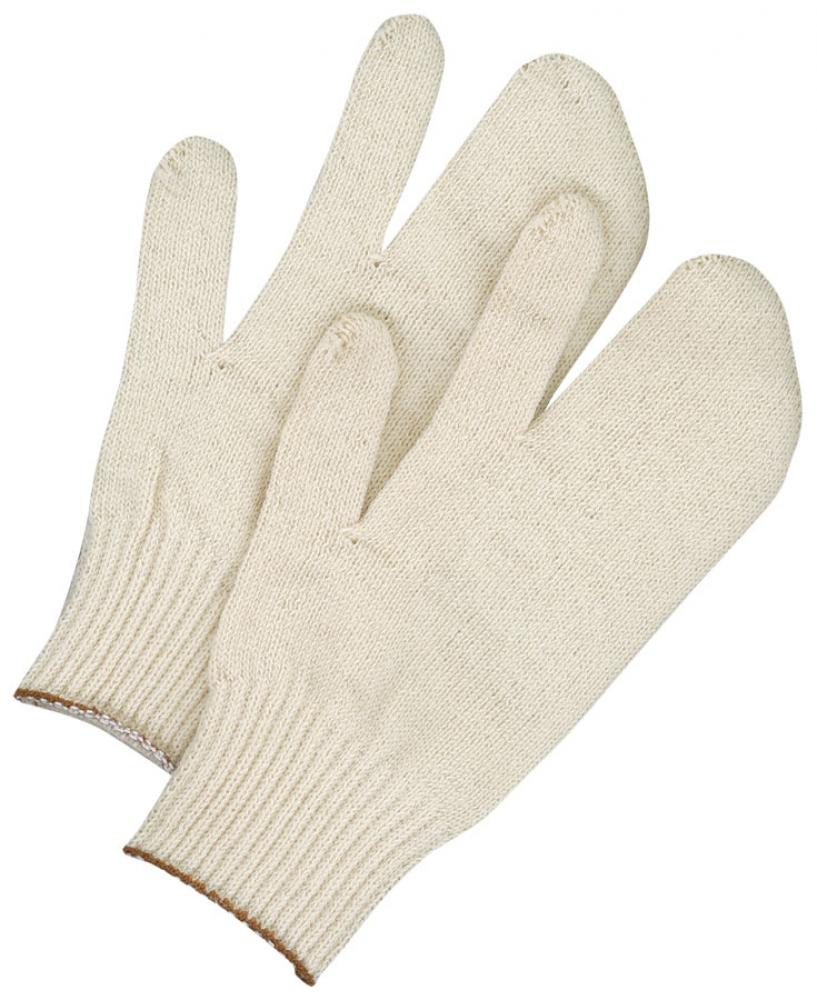By a Thread: Liner Mittens
Keeping your hands warm and your fingers nimble in the outdoors is a perennial issue, a problem that afflicts the human body in both sub-zero and above freezing temperatures, with wind and rain draining warmth just as fast as the Arctic deep freeze.
The degree to which this is a problem for individuals varies due to several factors. Physiology is often highlighted as the chief decider on cold hands, with long or short fingers being highlighted, body composition, general fitness etc. I once shared a long flight to Alaska with an Inuit hunter who believed that people who had lived in the North for centuries had shorted nerve endings and so didn't feel the cold. Still, it's more likely – if physiology plays a role in warm fingers – that the gene pool of people who could not keep their hands warm would soon run dry.
My own observation is culture plays a very large part in having warm hands.
First of all, people who have either grown up or who have been exposed to a lot of cold-related pain know both how to avoid such pain, and identify what is just pain pain, and what is a warning of the onset of freezing flesh. Such people tend not to bitch and moan about their cold hands, suffer hot aches and screaming barfires. It's not that they're just hard, but rather because they're skilled enough to become wimps and so know how to avoid pain in the first place.
Most people I've met who declare suffer from 'cold hands', and are constantly suffering from hot aches, or in extreme cases get frostbite (swollen fingertips etc), are also the kind of people who don't know how to dress their hands correctly, or who don't know how to dress full stop.
Such people will generally refuse to wear mittens, perhaps believing they're just for children, and instead will wear some form of a glove, with the high end, high tech, ski style glove being their go two extreme cold handwear. Such people will often also be obsessed with such gadgets as electrically heated gloves and heat pouches you find beside the tills of ski shops. Such cold handed people are not tight and will spend a fortune on gloves' systems' that don't work, chopping and changing their gloves all day in the vain hope of having warm hands, when in reality, they're either hot and sweaty or feel like dead cold meat.
When you ask someone with a lid pocket stuffed with gloves: liners, mid-weight, heavyweight, why they don't use mittens, they'll tell you that "you can't feel anything in mittens". I often remind them of such a statement when they're screaming with hot aches or have fingers so numb they can't do up their trousers flies.
Of course, other factors at play include diet, hydration, general fitness, stress levels, as well as the skill - developed over years of suffering – in how to avoid the pain, which is about not letting your fingers and hands get cold, and – of course – embracing the mitten.
The issue of extreme cold handwear is for another time, but here I'd like to cover an area of handwear dominated by the liner glove, which I think is worth questioning.
The Liner Glove
This piece of handwear is generally made from low-cost polypropylene (7 to 10 gauge) and is best viewed as industrial grade clothing, useful on a mountain, yes, but primarily for working in cold conditions in which dexterity is vital. Wool versions can be found, although they are best avoided unless you're the kind of person who also likes silk gloves (they wear out in hours).
The difference between a liner (or lightweight) glove and a mid-weight glove is the amount of loft in the material is minimal, with the material used acting more as a barrier between the skin and what is being touched. The material used, weight and construction also limits sweat, as well as has a high wick and dry time, with polypropylene being ideal due to it being hydrophobic, plus robust, and able to be constructed without seams.
Just as your base layers role is not to keep you warm but rather to aid the transfer of sweat away from your skin, so does the liner glove.
In the mountains, the liner glove is an ideal sacrificial hand layer for walking in, providing just enough protection, wet or dry), to keep your hands a little warmer, but dumped for heavier hand wear once you get to your destination (like walking in in just your base layers), but would not be carried as stand-alone protection for your hands. Often in the above role, two pairs will be carried.
The other role of the liner glove is for doing dexterous tasks in cold weather, typical camp duties like writing, sewing, or mending things. They also protect the skin for contact damage when touching cold items.
Do liner gloves work?
Yes, they have their place and are so cheap and easily available (buy them for hardware stores, not outdoor stores) that you don't risk anything by playing around with them (unlike those electrically heated gloves). They both weigh almost nothing, and pack down to nothing in a pack. Also, many designs are somewhat ambidextrous, so if you lose a glove, you can just mix and match. You can also use the gripper style liner gloves (Reflex, Ansell, Showa etc), which are much tougher, featuring a rubber (Nitrile) palm and fingers.
The problem with liner gloves
Although this might be a controversial point, I'd say the main problem with liner gloves is the liner part, in that personally; I'd avoid ever using them as anything but the mountain equivalent of a surgical glove. I would not make them part of a handwear system.
The reason for this is the reason why I tend always to avoid all kind of gloves, which is the best way to keep your fingers warm is by keeping them together. Just imagine five people laying in five survival bags on a mountainside; now imagine five people in one giant survival bag; which group would be warmer?
But, what if you do use a heavy-duty mitten, but have to remove it to do some dextrous task? Won't your fingers freeze? In my experience, a naked hand is warmer in the mitten than a gloved one and is also better able to do a dextrous task speedily when removed but also rewarms faster on re-entry to the mitt, the liner glove having picked up for more snow than bare skin. The problem of skin sticking to metal is less of an issue if your hands are dry, is kept to a minimum, and is generally more of an issue about not putting things in your mouth!
The mitten Alternative
So perhaps you don't want to go full Inuit style and use a single heavy-duty pair of mitts over naked hands, but you still enjoy all the advantages of a liner, but with some improvements (and negatives, of course).
One option is to use a liner mitten, which is just the same as the liner glove, being as thin as possible (7 to 10 gauge), polypropylene, low cost, light and low bulk, but a mitt. The advantages are gram for gram, such a mitt is far warmer due to your fingers being together, meaning it also dries faster and has a broader range of comfort (making it an acceptable summer weight emergency mitt).
The drawback with all liner handwear is that being unshelled, they will pick up far more snow, and so this will always reduce their effectiveness (you will introduce a snow covered liner back into your insulation, where the snow will melt and wet out that insulation).
The thinness of such a mitt makes it just as easy to carry dextrous work, and the stretchy nature of polypropylene even allows such a mitt to work when using cam triggers.
Where would you use a liner mitten?
Personally, in most temperatures, I will just use a stand-alone mitten, either shelled pile mitten for mild to mid sub-zero temperatures (+10 to -10), or a shelled synthetic mitten for colder temps, and as a backup to the pile mit (if it's not warm enough, or gets lost), using either like a belay jacket for the hands, or like a down suit for very cold temps. In all but the coldest temperatures, I would use such a mitten naked. For me, the liner mitt is of most use if working very hard, and sweaty hands would be an issue, but I still need protection, or when in camp/bivy/snowhole. When hunkered down, you don't want to be cooking, filling water bottles, eating food, reading your book, while wearing 8000-metre mittens. This is the ideal place for some form of liner mitt or glove.
As an aside, for super cold temperatures, where a vapour barrier layer might be employed for the hands (to keep your insulation dry), you might want to employ either liner style under a vapour barrier layer (you would need to sew together a silicone nylon VBL mitt to go over your liner mitt).
Who makes liner mittens?
As far as I know, only Bob Dale (US and Canada), make the kind of liner mitten I'm talking about, costing less than five dollars a pair (if you mail order some, get a few pairs). Other than that, all the other liner mitts you'll find are made from wool, which, although effective, are generally neither robust enough for hard use or cheap enough for the job at hand (cheap is good). Of the wool varieties on offer, the Bob Dale seamless wool liners, at around twelve dollars, are the best you'd find. Bob Dale also produce a very thin lobster liner mitt, which is ideal for very technical tasks in sub-zero temperatures, allowing you to whip off your overmitt, do the job, and then throw the mitt back on.
I'm sure it would be great to have companies like Montane or Mountain Equipment having such a mitt in their lineup, but I suspect it would neither sell to shops or be bought by customers, the reason by the same reason most people suffer cold hands and fingers; namely, most people don't know how to dress properly.







